Related Research Articles

The Turks and Caicos Islands are a British Overseas Territory consisting of the larger Caicos Islands and smaller Turks Islands, two groups of tropical islands in the Lucayan Archipelago of the Atlantic Ocean and northern West Indies. They are known primarily for tourism and as an offshore financial centre. The resident population in July 2021 was put at 57,196, making it the third-largest of the British overseas territories by population.
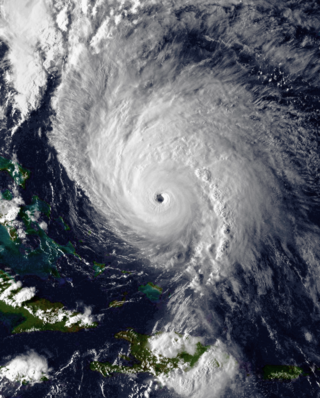
Hurricane Hortense was the first tropical cyclone to make landfall in Guadeloupe and Puerto Rico since Hurricane Hugo in 1989, and the second most intense hurricane during the 1996 Atlantic hurricane season. The eighth tropical cyclone, eighth named storm, and sixth hurricane of the season. Hortense developed on September 3 from a tropical wave in the central Atlantic Ocean. Initially a tropical depression, it headed westward without significant strengthening for four days due to unfavorable upper-level winds. While nearing the Lesser Antilles upper-level winds decreased, allowing the depression to become Tropical Storm Hortense on September 7. Hortense crossed Guadeloupe on September 8 and entered the Caribbean Sea. By on the following day, it was upgraded to a hurricane while curving northwestward. Hortense made landfall in Puerto Rico on September 9 and brushed the Dominican Republic shortly thereafter. After re-entering the Atlantic, Hortense began to substantially strengthen and peaked as a 140 mph (220 km/h) Category 4 hurricane early on September 13. Thereafter, the storm steadily weakened as it tracked rapidly north-northeastward. Early on September 15, Hortense made landfall in Nova Scotia as a minimal Category 1 hurricane. It quickly weakened further to a tropical storm before re-entering the Atlantic to the south of Newfoundland. Late on September 15, Hortense transitioned into an extratropical cyclone and subsequently merged with a frontal system about 24 hours later.

Before European colonization, the Turks and Caicos Islands were inhabited by Taino and Lucayan peoples. The first recorded European sighting of the islands now known as the Turks and Caicos occurred in 1512. In the subsequent centuries, the islands were claimed by several European powers with the British Empire eventually gaining control. For many years the islands were governed indirectly through Bermuda, the Bahamas, and Jamaica. When the Bahamas gained independence in 1973, the islands received their own governor, and have remained a separate autonomous British Overseas Territory since. In August 2009, the United Kingdom suspended the Turks and Caicos Islands' self-government following allegations of ministerial corruption. Home rule was restored in the islands after the November 2012 elections.
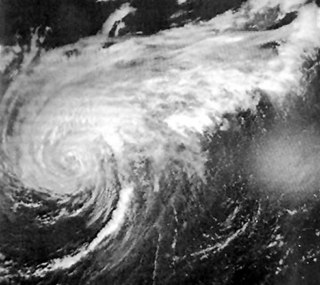
Hurricane Faith was a long-lived Cape Verde hurricane and was the sixth named storm and fifth hurricane of the 1966 Atlantic hurricane season. Faith developed from an area of disturbed weather between Cape Verde and the west coast of Africa on August 21. Tracking westward, the depression gradually intensified and became Tropical Storm Faith on the following day. Moving westward across the Atlantic Ocean, it continued to slowly strengthen, reaching hurricane status early on August 23. About 42 hours later, Faith reached an initial peak with winds of 105 mph (169 km/h), before weakening slightly on August 26. Located near the Lesser Antilles, the outer bands of Faith produced gale-force winds in the region, especially Puerto Rico, the Virgin Islands, and Antigua. Minor coastal damage occurred as far south as Trinidad and Tobago.

The 1935 Atlantic hurricane season was near-normal hurricane season. Altogether, ten tropical cyclone developed, eight of which intensified into tropical storms. Five of tropical storms strengthened into hurricanes, while three of those reached major hurricane intensity. The season ran from June 1 through November 15, 1935.
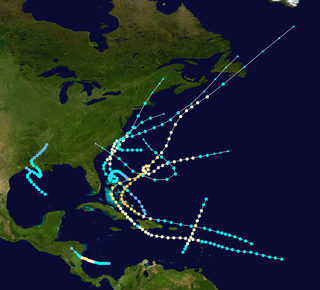
The 1908 Atlantic hurricane season remains the only season on record to feature two hurricanes prior to the month of June. The season produced thirteen tropical cyclones, of which ten became tropical storms; six became hurricanes, and one of those strengthened into a major hurricane – tropical cyclones that reach at least Category 3 on the modern day Saffir–Simpson scale. The season's first system developed on March 6, which was the only known tropical cyclone to have developed in the month of March since official records began in 1851. The last storm transitioned into an extratropical cyclone on October 23.
The 1810s witnessed a series of tumultuous and devastating Atlantic hurricane seasons. These powerful tropical cyclones left a profound impact on the coastal regions and communities of the Americas. In this article, we will delve into the history of the 1810s Atlantic hurricane seasons, exploring their significance, notable storms, and the lessons learned from these natural disasters.
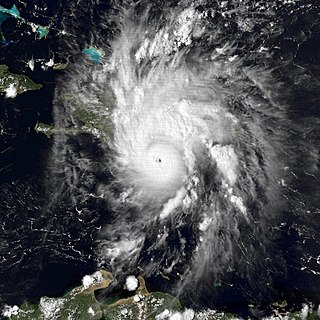
Hurricane Emily was a powerful tropical cyclone that struck Hispaniola in September 1987. It was the first hurricane in the Caribbean Sea since Hurricane Katrina of 1981 and had the second-fastest forward speed of a 20th-century hurricane, behind only the 1938 New England hurricane. The twelfth tropical cyclone, fifth named storm, second hurricane, and only major hurricane to develop during the below-average 1987 Atlantic hurricane season, Emily formed out of a tropical disturbance that moved off the west coast of Africa on September 20, the storm quickly attained hurricane status before undergoing rapid intensification. On September 22. The storm attained its peak intensity with winds of 125 mph (201 km/h) and a barometric pressure of 958 mbar later that day. The storm weakened to Category 2 status before making landfall in the Dominican Republic. After weakening to a tropical storm, Emily rapidly tracked northeastward through the Atlantic Ocean, undergoing a second phase of rapid intensification before passing directly over Bermuda on September 25. The following day the final public advisory from the National Hurricane Center was issued on the storm as it transitioned into an extratropical cyclone.

Hurricane Olga was the largest tropical cyclone by diameter of gale-force winds on record in the Atlantic at the time. The fifteenth named storm, ninth and final hurricane of the 2001 Atlantic hurricane season, Olga formed as a subtropical cyclone on November 24. After acquiring tropical characteristics later that day, Olga meandered westward, and eventually reached hurricane status on November 26. Olga peaked as a 90 mph (140 km/h) Category 1 hurricane before the storm turned southwestward and weakening back into a tropical storm. On November 30 it deteriorated further to a tropical depression, although it re-intensified two days later to tropical storm intensity. Olga then dissipated as a tropical cyclone on December 4 east of the Bahamas. Its damaging effects were limited to ships at sea. The cyclone's remnants produced heavy rainfall across the Bahamas and Florida. It was a relatively rare storm to exist in December, which is outside of the normal Atlantic hurricane season.

The 1877 Atlantic hurricane season lasted from mid-summer to late-fall. Records show that in 1877 there were eight cyclones, of which five were tropical storms and three were hurricanes, one of which became a major hurricane. However, in the absence of modern satellite and other remote-sensing technologies, only storms that affected populated land areas or encountered ships at sea were recorded, so the actual total could be higher. An undercount bias of zero to six tropical cyclones per year between 1851 and 1885 and zero to four per year between 1886 and 1910 has been estimated.

The 1866 Atlantic hurricane season was originally one of only four Atlantic hurricane seasons in which every known tropical cyclone attained hurricane status, along with 1852, 1858, and 1884. Initially, there were three known storms during the season, but a re-analysis confirmed the increased activity. There were also two other systems that were included as tropical cyclones at one time, although both were considered to have been other storms already in the database. All tropical activity occurred between the middle of July and the end of October. There may have been additional unconfirmed tropical cyclones during the season. Meteorologist Christopher Landsea estimates that up to six storms were missed from the official database, due to small tropical cyclone size, sparse ship reports, and relatively unpopulated coastlines.

The 36th CARIFTA Games was held in the National Stadium on the island of Providenciales, Turks and Caicos Islands, on April 7–9, 2007. Detailed reports on the results were given.
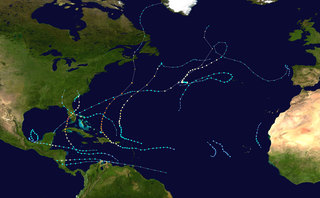
The 2022 Atlantic hurricane season was an average, yet extremely destructive hurricane season. It had an average number of named storms, a slightly above-average number of hurricanes, a slightly below-average number of major hurricanes, and a near-normal accumulated cyclone energy (ACE) index. Despite this, it became the third costliest Atlantic hurricane season on record, behind only 2017 and 2005, mostly due to Hurricane Ian. There were 14 named storms during the season. Eight of them strengthened into a hurricane, and two reached major hurricane intensity. The season officially began on June 1, and ended on November 30. These dates, adopted by convention, historically describe the period in each year when most subtropical or tropical cyclogenesis occurs in the Atlantic Ocean. This year's first Atlantic named storm, Tropical Storm Alex, developed five days after the start of the season, making this the first season since 2014 not to have a pre-season named storm.

The Turks and Caicos Islands Regiment is the home defence unit of the British Overseas Territory of the Turks and Caicos Islands. It is a single territorial infantry and engineer reserve unit of the British Armed Forces that was formed in 2020. The Regiment has an authorized strength level objective of 46 personnel, akin to that of a platoon-sized unit.

The COVID-19 pandemic in the Turks and Caicos Islands is part of the ongoing global viral pandemic of coronavirus disease 2019 (COVID-19), which was confirmed to have reached the British Overseas Territory of the Turks and Caicos Islands on 23 March 2020, and the first death occurred on 5 April. On 12 May, all cases were declared resolved, but on 20 June, new cases had been discovered. On 4 July 2021, all cases resolved again. On 8 July, new cases were discovered.

The Bahama Archipelago, also known as the Lucayan Archipelago, is an island group comprising the Commonwealth of The Bahamas and the British Overseas Territory of the Turks and Caicos Islands. The archipelago is in the western North Atlantic Ocean, north of Cuba along with the other Antilles, and east and southeast of Florida. The archipelago has experienced the effects of at least 22 Atlantic hurricanes, or storms that were once tropical or subtropical cyclones, including 17 since 2000. The storms collectively killed 101 people.

The 2022 Atlantic hurricane season saw an average number of named storms and hurricanes, and below average number major hurricanes. There were fourteen named storms during the season; eight of them strengthened into a hurricane, and two of those reached major hurricane intensity. The season officially began on June 1, and ended on November 30. These dates, adopted by convention, historically describe the period in each year when most subtropical or tropical cyclogenesis occurs in the Atlantic Ocean. No subtropical or tropical development occurred in the Atlantic prior to the start of the season, making this the first since 2014 not to have a pre-season named storm. The season's first storm, Tropical Storm Alex, formed on June 5, and the last, Hurricane Nicole, dissipated on November 11.
This article lists events from the year 2022 in The Bahamas.

Hurricane Fiona was a large, powerful, and destructive Category 4 Atlantic hurricane which was the costliest and most intense tropical or post-tropical cyclone to hit Canada on record. It was the sixth named storm, third hurricane and first major hurricane of the 2022 Atlantic hurricane season.
Events in the year 2022 in Puerto Rico.
References
- ↑ Bell, Jonathan (2022-07-22). "Bermuda confirms first case of monkeypox". www.royalgazette.com. Retrieved 2022-10-06.
- ↑ Alonso, Jason Hanna,Elizabeth Wolfe,Melissa (2022-09-21). "Ruinous Hurricane Fiona reaches Category 4 as it moves north, leaving disaster-stricken areas on slow road to recovery". CNN. Retrieved 2022-10-06.
- ↑ "EU adds Anguilla, Bahamas, Turks and Caicos to tax blacklist | Loop Caribbean News". Loop News. Retrieved 2022-10-06.
- ↑ "Tributes paid to former League of Ireland goalkeeper Freddy Hall who has died, aged 37". independent. Retrieved 2022-10-06.